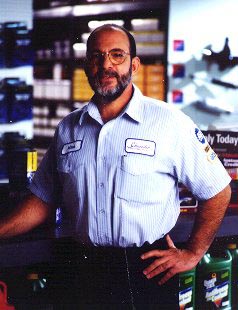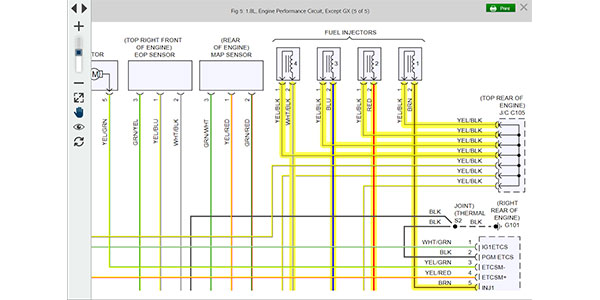
Contributing Editor
Well, you’ve probably already figured out that they weren’t identical, because if they were, there wouldn’t be much to write about. Unfortunately, there is plenty to write about and, with any kind of luck, it just may help serve as an object lesson for us all.
I don’t know how you feel about “customers’ own parts,” but after all this time you probably have a pretty good idea what I think about installing anything furnished by the vehicle owner. As far as I’m concerned, it’s like playing Russian Roulette — only in reverse. You take a revolver that holds six bullets, take just one out, spin the barrel and then take your chances! Under the best of circumstances it’s a gamble and you have to admit, the odds aren’t very attractive!
The customer saves on the parts; you lose on the job because of the lost profit on parts. And, that’s if everything goes right! If things don’t go 100% right, the exposure is almost incalculable.
Aside from that, the customer isn’t sophisticated enough to recognize the difference between a “quality” replacement part and its “bargain basement” equivalent. Besides, the majority of those individuals inclined to bring you — or try to bring you — their own parts, want to believe that what the old chicken commercial proclaimed is true: “Parts Is Parts!”
They generally aren’t experienced enough to determine if the part is, in fact, identical either. And, they certainly aren’t sophisticated enough to differentiate between a parts-related failure and poor installation quality. That’s why we just won’t do it. There isn’t any upside: not with all the conceivable benefits pointed toward the individual supplying the parts and all the liability pointed at you and me.
So, before you start calling or writing or emailing, asking why we worked on the vehicle if the customer supplied the parts, the simple answer is, we didn’t know! Not until we were too far into the briar patch to crawl back out without penalty or pain.
How is that possible? How could we not know?
You see, not all customers can be trusted to share the most intimate details of a failure with you because, for the most part, they have no way of knowing which of those details is relevant, let alone critical. And, unfortunately, this was not going to be the exception to the rule. All the vehicle owner knew for sure was that if he left his little Mustang parked for too long it wasn’t likely to start without a boost when he returned.
At first glance, it all sounded pretty straightforward on the phone when the motorist first called: check this, look at that, throw in a little inspection and testing, and you’ve got the answer to a question, a solution to the problem. Of course, that was until both the vehicle owner and the vehicle arrived at the shop and the explanation of what the vehicle was doing, and the circumstances under which it was doing it, became a lot more complicated. Oh, the business about it not starting if it was left for too long didn’t change. It couldn’t. There was a significant parasitic drain. However, as the second and third conversations about the actual circumstances and conditions under which the vehicle failed began to form a pattern, we started to feel the way most dentists must feel while trying to extract a difficult tooth. Only surgery isn’t an option when it’s information you’re trying to pull from the client’s mouth, and not a tooth.
IT’S LIKE PULLING TEETH. . .
After what seemed like a lifetime: a twisted image, a bizarre cartoon, began to take shape in my mind. It had the customer laid out in one of the chairs in our waiting room just behind where he was standing. His body was straight as a board and his arms were hanging over the arm rests. His head was tilted back at an almost impossible angle and his mouth was wide open! I was perched above him with both feet firmly planted on the armrests and a giant pair of vise grips securely fastened on the information I needed. And, as I struggled and strained, trying to get that information out, his neck began to stretch until it just couldn’t go any farther!
Suddenly, there was a loud, Pop! And, I came tumbling off the chair with everything I needed caught in the jaws of the pliers!
Getting the Mustang’s owner to admit that there was a larger story to be told, more information to be shared, was almost that difficult. It seems the A/C compressor wouldn’t turn off, even when the switch was in the off position and there was no indication it was on. After verifying the symptoms and looking at the schematics, we began to look at the Constant Control Relay Module (CCRM) as the possible cause of the problem.
When we informed the customer, he told us that’s where his “diagnosis” of the problem had led him, and that to confirm that diagnosis he went to a Ford dealership and ordered a new CCRM and then installed it, without successfully resolving his problem — something that, for whatever reason, he had failed to mention.
Now, we found ourselves slowly sinking into the bog created by inadequate and inaccurate information provided, or more appropriately, withheld, by the one person with the most compelling motivation to tell us the truth, the whole truth and nothing but the truth!
What do you do? Give the vehicle back, wave your finger in the owner’s face and tell him to get out because he lied? If we did that to everyone who left a puzzle piece at home while on their way to the shop for service, it wouldn’t be too long before we had no one to talk to other than ourselves! All you can do is try to harvest the information you need at the counter as successfully as you can, and then if or when it turns out there are pieces missing, do whatever you can to acquire them as soon as you can. Then, fix the vehicle. After all, it’s not like we haven’t done it before.
Given that the customer had already done the obvious and replaced the most likely failure with a “known good part,” in other words, a brand new factory CCRM, we started looking at form, function and wiring. The fact that we had a ground on the control side of the A/C clutch pointed to a problem in the part of the wiring harness “hiding” inside the fender well. We secured the customer’s authorization to proceed, then accessed and inspected the wiring for damage. Unfortunately, there was none. We checked the voltage with the old CCRM installed, which fortunately had been left in the trunk, and to our surprise all the signals were normal. The only thing it wasn’t doing was supplying a signal strong enough to engage the A/C clutch.
LOOKS LIKE A JOB FOR SHERLOCK HOLMES
Then, we started to dig around some more. With the old CCRM installed and the A/C control switch in the off position, it didn’t matter if the ignition key was on or off; there was no drain and no voltage to the A/C clutch. With the new CCRM installed and the ignition switch and the A/C control switches in the off position, the CCRM was supplying voltage to the A/C clutch and the clutch was engaged.
Simple: the customer had purchased a defective part. Simple enough: replace the “known good part” with a “known good part” that was really good. We had the receipt. We had the part number. We had the name and the phone number of the dealership that sold the part.
Simple, but not easy! The second CCRM came up and performed precisely as the first had; the symptoms were identical. Where do you go from there?
If you’re us, and you knew exactly what the original part had been doing and you knew exactly what two identical replacement parts were doing, you start to look for the impossible; the bizarre; the obscure.
You go over every detail as carefully as you can. And, if you’re really careful, you discover that, despite the fact that all three of the units sitting on your counter are identical in virtually every way, the two replacement CCRMs had the same part number, while the original had a number that was ever-so-slightly different.
We dug even deeper and found that the two replacement units, the one the customer had purchased and the one we were going to replace as defective, were for a V8 Mustang while the vehicle we were working on was a V6…Oops!
We ordered and installed the correct CCRM and, lo and behold, everything began to work normally. The air conditioning engaged and disengaged on command and there was no draw! Case closed? You would think so. You might even hope so, but that wasn’t going to happen until the Mustang’s owner had an answer to his “How could that happen?” questions. We weren’t qualified to answer these questions because we weren’t involved when the purchase was made.
And, that is yet another reason we don’t like to install customer-supplied parts. You see, when we order parts, we try to do everything we can — anything we can think of — to help ensure the right part is delivered the first time and, after a lifetime of knowing how easy it is for something like this to happen if you aren’t careful, and don’t ask the right questions, we’ve become pretty good at it.
The vehicle owner trying to source his own parts doesn’t have the experience or the necessary understanding to recognize just how easily something like this can happen or what to do to avoid it when it does happen, and as a result — all too often — find themselves asking “How could that happen?” When, in fact, the real question they should be asking is “Why did this happen?” and, “How did I contribute?”






